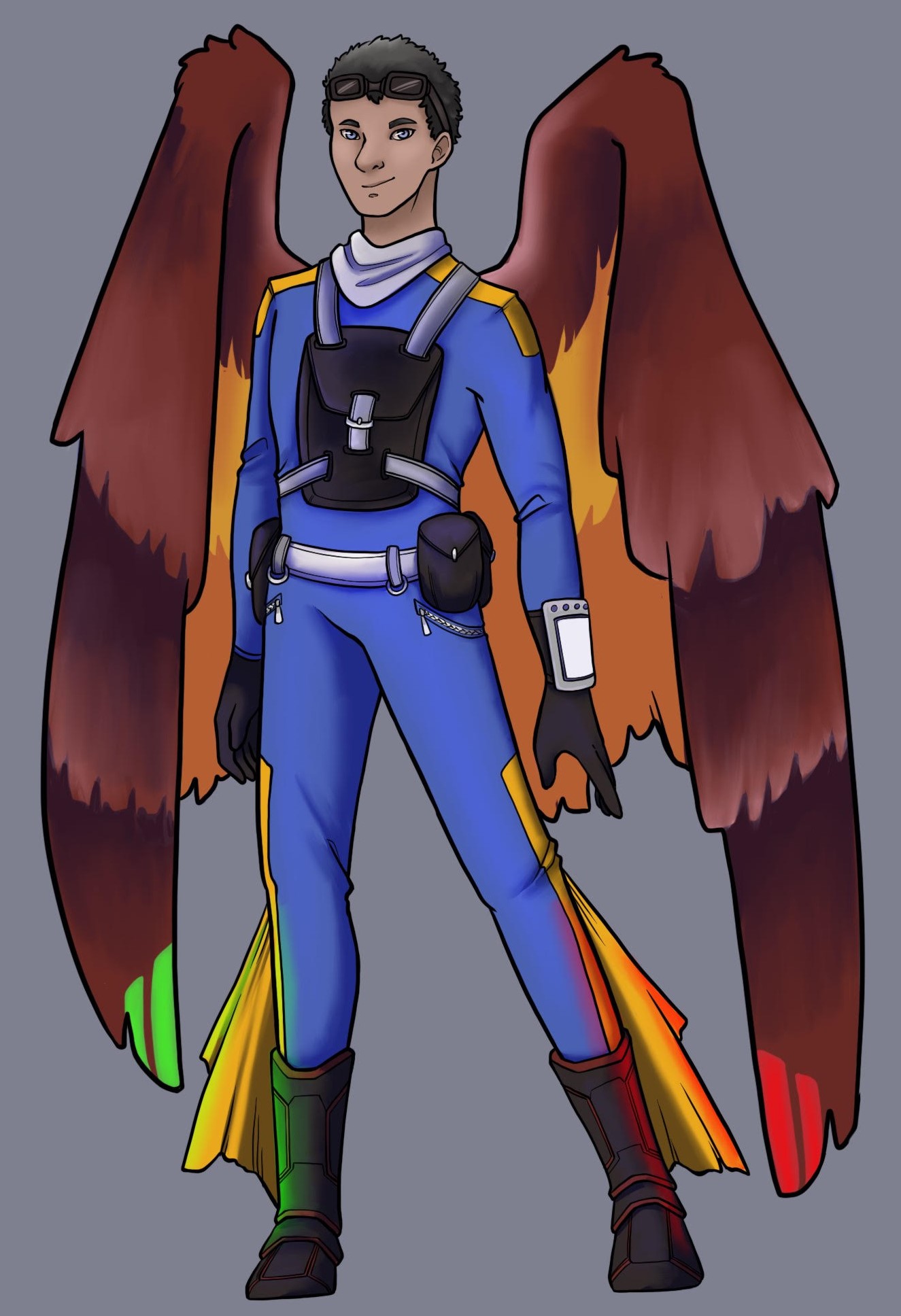A flight suit and basic supplies are considered the only true essentials for
a Magellan flight.
The goal is to circumnavigate a planet by flying, starting at a given point and flying all the way around to return to the same spot. Various rules and norms have developed around this, defining what counts as an acceptible circumnavigation for a given planet. The flight must be done at a low enough latitude that a significant portion of the planet's circumference is traveled, in some cases the rules require the equator be crossed at least once in order to ensure this. Selection of specific planets is also important, Magellan flight participants typically seek to choose a world which has a thick enough atmosphere for comfortable flying, and enough landmass at middle latitudes so that long periods of over-water flying (which can be dangerous) are not required. A few worlds in
Starweb space are notable for best fitting these criteria and have become common sites of Magellan flights. Avens, rare in most of the Starweb, can be encountered in greater numbers in such places, and some have even established permanent settlements.
With regards to equipment, the less technology the better. (This is one reason why most Athenians think humans are not properly able to perform Magellan flights.) While essentials like a
flight suit are used, too much reliance on artificial aids is discouraged in order to create an experience as purely focused on flying as possible. While casual participants may rely on air-mass detectors and global positioning systems, aficionados restrict themselves to simple instruments and navigation based off landmarks and the aven compass sense. High-tech versions do exist, however, utilizing high-altitude suits to fly at airplane-equivalent levels and often focusing on making the fastest circuit possible.
Participants usually follow predefined routes with regular stops, typically at mid-day for a meal and then overnight. A full flight all the way around a planet easily lasts for several weeks, more if the traveler stops to see the local sights. One common goal is accomplishing ancient Terran author Jules Verne's tale of traveling around the world in eighty days. Using artificial transportation such as ground vehicles or airlines is considered cheating when used instead of flying part of the route, but is permitted for side trips and sightseeing excursions not directly related to completing the circumnavigation. Hence, the custom is to resume the flight by taking off within a reasonably close distance of where one landed to make a rest stop. Vehicles are permitted in some limited cases, particularly when a large body of water stands in the way and a detour would add excessive time.
Culture
Making a Magellan flight is often considered part of the flight training received by all avens and other Children of Athena. As they grow older, they begin to make longer flights, for instance going from flying between home and school to traveling to a nearby town, to joining their family in a cross-continental trip to visit some relatives. Completing a Magellan flight shows one's skill and independence. For an introvert, a solo flight offers a chance to unwind and see some out-of-the-way spots, while for an extrovert many new friendships are sure to be made when traveling in a group. This has become something of a coming-of-age tradition among avens and sphinx to mark the completion of flight training and the beginning of adulthood, though they recognize not everyone wants to participate.
People who complete a Magellan flight around a given planet usually receive or make for themselves a commemorative badge or patch which they wear on their flight suit or display on a map of locations they've visited. If asked, most avens will compare the desire to make long flights as similar to how humans climb tall mountains or take long hikes.
The presence of Magellan flight participants has occasionally caused strife with other cultures, including several tragic cases of collisions with other aerial vehicles due to poor aviation safety. In some cases local authorities have designated specific routes to be followed, and rest stops along the way feature advertisements painted atop the roofs of buildings. Making the first circumnavigation of a newly-discovered habitable planet is considered a great accomplishment, and several adventuring companies in the Starweb are known to offer expeditions for this.


Comments